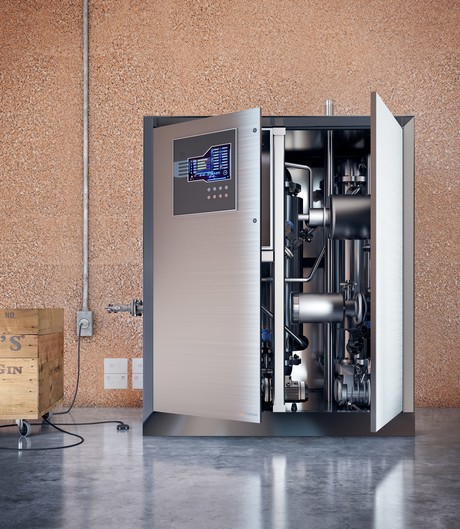Energy on demand: innovative energy system launched

Australian technology company Infratech Industries, in collaboration with the University of Newcastle, has launched an ‘energy on demand’ system that overcomes the predictability and environmental issues that currently plague existing renewable energy and storage solutions.
Dr Rajesh Nellore, CEO and founder of Infratech Industries, said that the impetus on energy storage systems, such as batteries, needs to be supplemented with the ability to generate energy when required, thereby creating energy on demand. This is offered by the Infratech CLES (Chemical Looping Energy on Demand System), which claims to put the production, distribution and management of power, oxygen and hydrogen into the hands of the consumer.
Offering a solution to Australia’s energy crisis, the technology allows for integrated power generation, oxygen generation, water heating, hydrogen, heating and cooling ventilation. It was launched this week at the university’s Newcastle Institute for Energy and Resources (NIER) by Pat Conroy, Shadow Assistant Minister for Climate Change and Energy.
Professor Behdad Moghtaderi, director of the Priority Research Centre for Frontier Energy Technologies and Utilisation at NIER, co-led the team that developed the thermochemical process for Distributed Energy Generation (DEG), otherwise known as the Chemical Looping Energy on Demand technology. He noted, “While the technology draws from my invention — the CLAS (Chemical Looping Air Separation) process, which is patented by the University of Newcastle — it also features a number of unique characteristics which make it distinct.
“It’s a polygeneration process capable of simultaneous production of heat, power, oxygen, hot water and chilled water for air conditioning. As a result, the overall efficiency of the process is in excess of 90%.”
The system can be operated in two modes — around the clock or ‘energy on demand’, where the system is powered by gas — or as an energy storage system, where the system is powered by electricity stored during off-peak periods from renewables including wind and solar or from the grid.
In the energy-on-demand setting the system runs on natural gas for temperature balancing, releasing only a third of the greenhouse gas emissions of fossil fuels and with no intermittency compared with renewable energy sources. It can run for predefined periods and can be programmed to produce only power and oxygen or a combination of both, along with heating, cooling, hot water and hydrogen.
“In this mode, the system needs external heat to maintain reactions within the particle mixture,” said Dr Nellore. “The heat can be supplied by either natural gas, electricity from renewable energy sources, by the system itself or in any combination.”
As an energy storage system the unit acts like a battery, storing electricity generated by solar panels, wind farms and grid during low-demand (ie, off-peak) periods. In this mode, said Professor Moghtaderi, the system augments existing renewable technologies and could help manage base load energy demands.
“This capability facilitates the deployment of renewable energy sources such as wind and solar. It can provide power for 12 hours during peak energy-demand periods,” he said.
“It could also take and store energy from the grid during off-peak periods, which is a lower-cost option for the end user and reduces base-load demand on centralised energy networks.”
The Infratech system is scalable and can service large customers, such as hospitals and shopping centres, as well as smaller installations such as residential and medical therapy customers, where numerous types of respiratory diseases are treated with oxygen. The system will also create a hydrogen network for fuel cell cars in the future.
The CLES reference plant launched this week can produce energy for 30 average Australian homes, along with oxygen, hot water, heating, cooling and hydrogen for these homes. The reference plant system will soon be shipped to a permanent customer site, to be chosen from a pool of interested companies that will shape the future of energy distribution and technological advancement in Australia.
It is claimed that within 18 months, a scaled Infratech CLES system will be available to every Australian home owner.
Untapped solar could achieve billions in savings
UNSW research has found that people living in apartments, social housing and private rental...
NSW South Coast gains its first community battery
The Shell Cove battery is one of 54 batteries currently being rolled out across Endeavour's...
The sustainability sector's thoughts on a 'future made in Australia'
Hear thoughts from leaders in heavy manufacturing and climate tech, regional areas and cities as...











